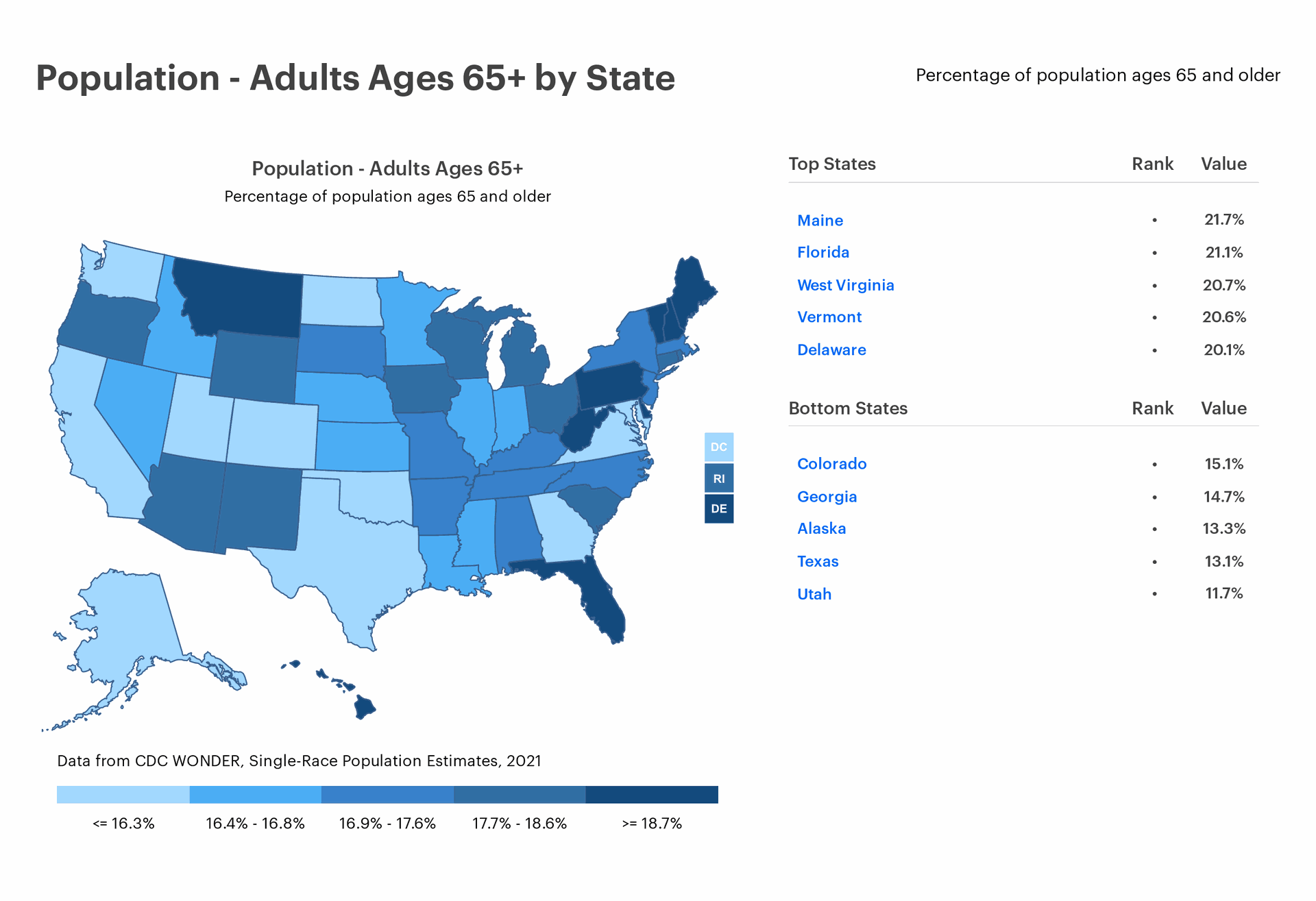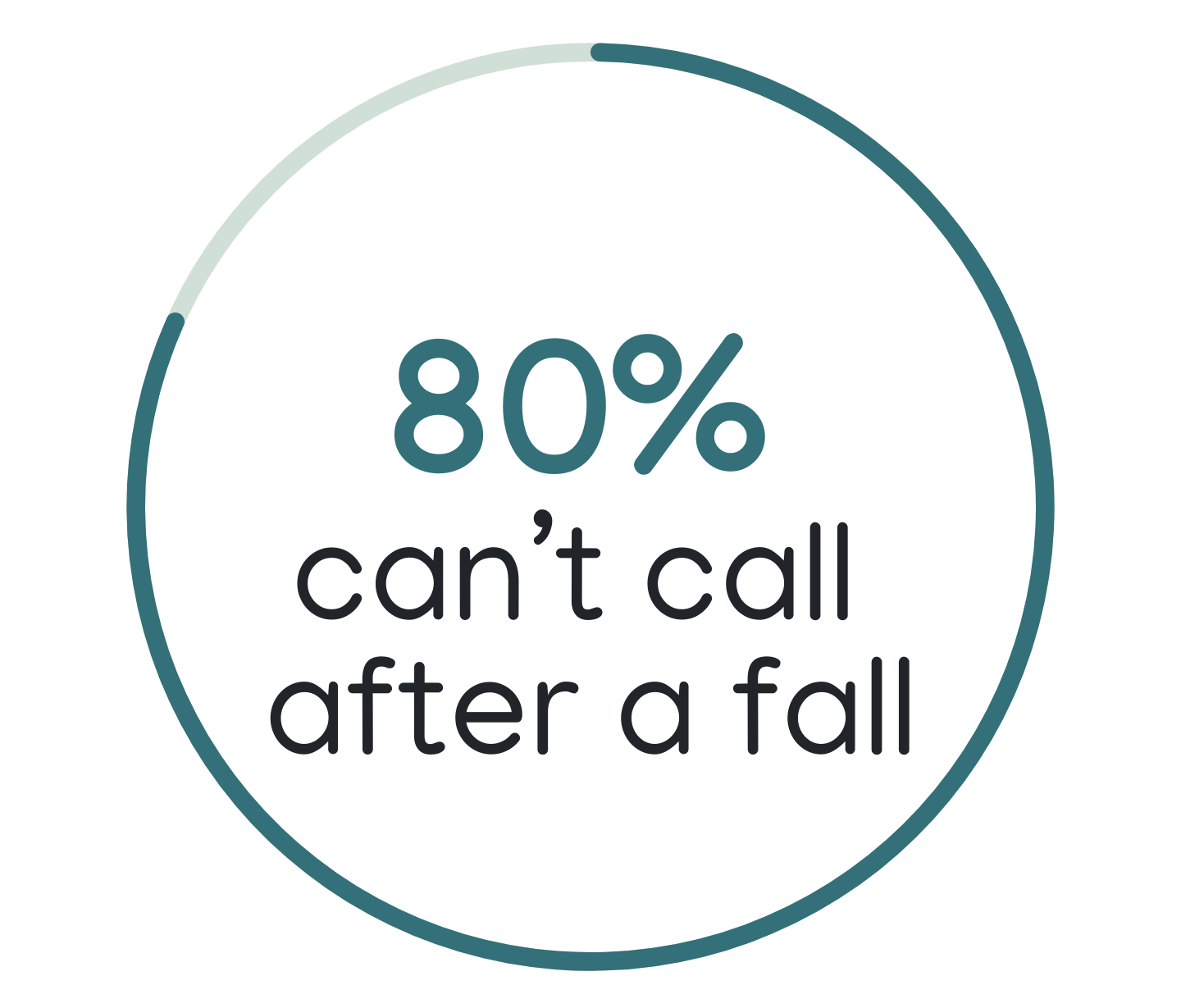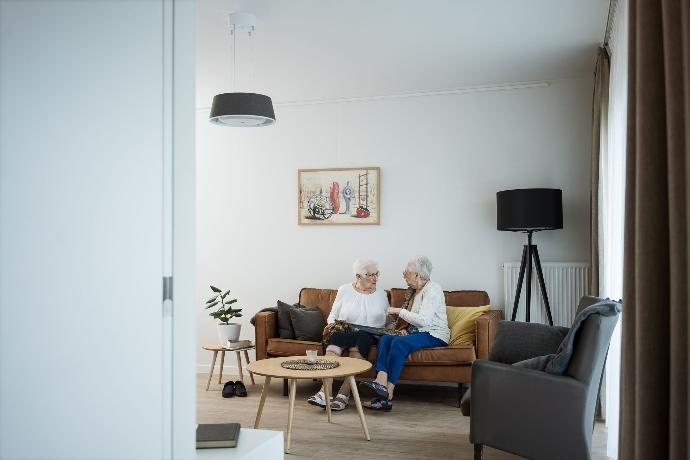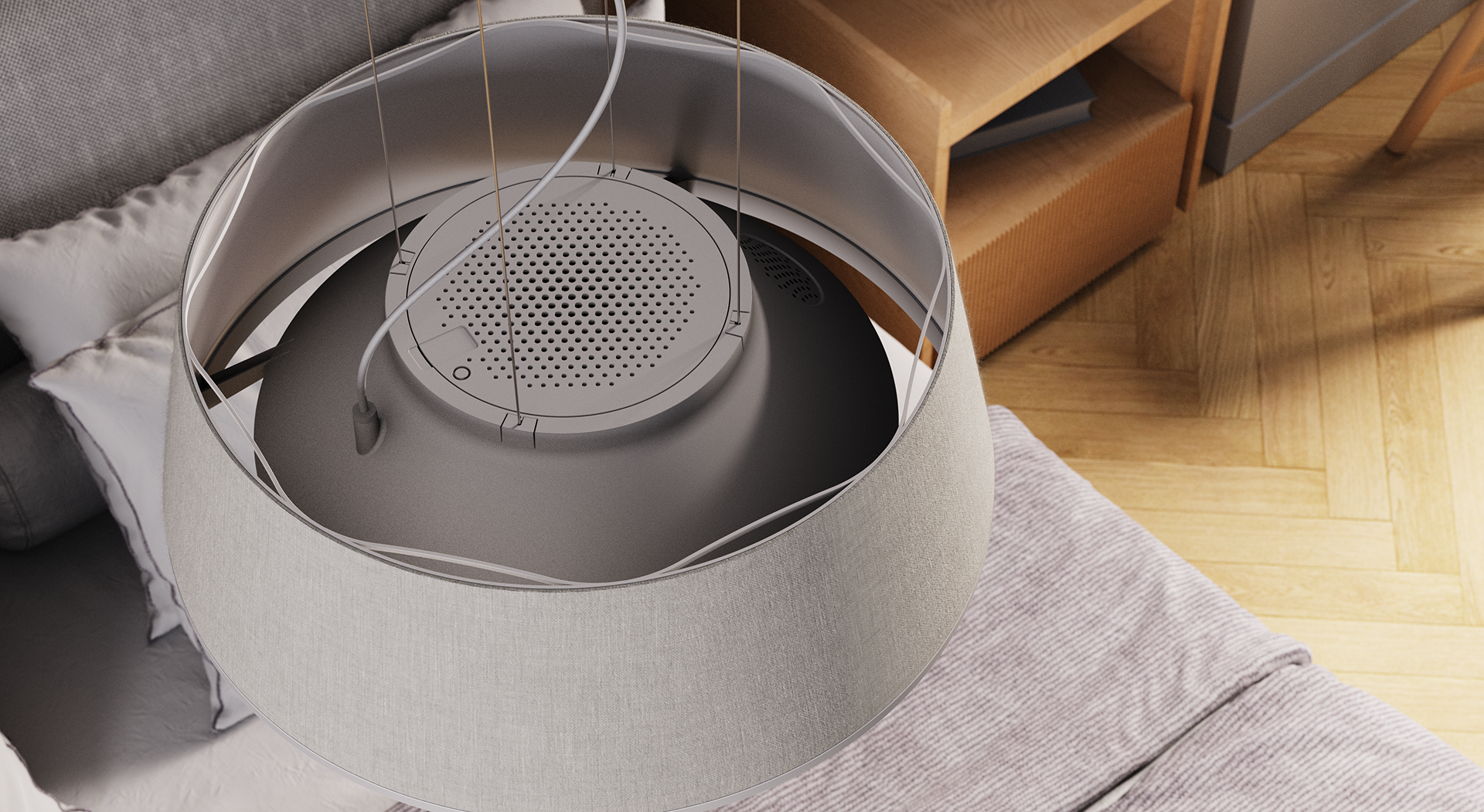We have a challenging societal problem in the United States: our aging population. According to the latest Census data, more than 55.8 million adults ages 65 and older live in the United States, accounting for approximately 16.8 percent of the nation's population. That figure is expected to reach22 percent by 2050 – a significant increase from 1950, when only eight percent of the population was 65 or over.

Population: 65 and older
Source: America' s Health Ranking
We’re an aging U.S. population, and that puts care, and the staff delivering it, in greater demand when there is already a striking shortage of skilled caregivers. Exacerbating this problem is the rising costs of care, and the healthcare expenses related specifically to falls.
Big Numbers. Big Impact. Big Problem.
If you consider the numbers at play and the impact of falls across the entire healthcare ecosystem, then it’s not too hard to see the magnitude of the problem facing us without immediate intervention—and innovation.
Consider these statistics, then you’ll understand the significant repercussions falls present:
- A World Health Organization (WHO) study found that the cost of falls will rise to $240 billion by 2040.
- The CDC reports that the economic impact of falls costs more than $50 billion on an annual basis to the United States and $29.4 billion to Canada.
- According to the WHO, falls are currently ranked as the “second-leading cause of unintentional injury deaths worldwide.”
- It’s estimated that 684,000 individuals are unfortunately dying from fallsglobally each year, with adults older than 60 years of age suffering the greatest number of fatal falls.
- Around one-third of people aged 65 and over, and around half of all people aged 80 and over, fall at least once a year.
- According to the CDC, falls account for 85 percent of injury-related hospitalizations among seniors and are responsible for 95 percent of hip fractures in that age group.
- Half of the falls that lead to hospitalizations, 20 percent of these are the result of “long lies” (when a person has fallen and spends a prolonged period of time—more than an hour—on the floor because they are unable to get up). Long-lie falls have been shown to double mortality rates.
- Half of older people who lie on the floor for more than an hour will die within six months of related complications.
The numbers don’t lie. Falls and the increasing likelihood of falling are a major matter of concern for older adults as well as their closest relatives and/or caregivers.
The ineffectiveness of traditional nurse call systems in residential care communities
When older adults fall more frequently, they are often moved to residential care centers in order to prevent them from falling or to at least have someone nearby to help them up. But due to staff shortages, this availability is far from perfect.

Eighty percent of fall victims can’t call after a fall, rendering traditional nurse-call systems ineffective. Caregivers cannot be present around the clock in residents' rooms, and many seniors who can independently rise after a fall, consciously or unconsciously, choose not to report the occurrence.
Even worse, when nurses are performing their nightly rounds, this may cause some residents to rise and potentially fall (because this intrusion has awoken them). When this happens after the nurse has left the room, it may take hours before the fall is detected. The nurse call system simply isn’t capable of handling this risk adequately, and the current availability of supporting technology is often found lacking as well.
Personal alarm or panic buttons aren’t dependable
About 95 percent of older adults living independently at home are provided with an alarm button. Yet, in 80 percent of cases, traditional wearable panic buttons don’t lead to assistance after a fall because they depend on uncontrollable human action. Older adults don’t use it properly in an emergency, because they forget to wear it, or in a panic, are not always able to actively raise the alarm. Too often, these types of devices rely on procedures that older people simply refuse to adopt because they are too stigmatizing or too hard to use.
Moreover, this approach starts from the assumption that people will fall sooner or later. It’s about “fall detection” rather than “fall prevention”. The latter could use far more attention. If we ensure that people fall less often, we don’t need detection as much. This can be done using a combination of training, better lighting and physical support, as well as technology that can adapt to older adults’ behaviors—requiring little to no action on their parts.
Innovatively designed technology can help solve the problem
Our aging population is putting immense pressure on healthcare staff. Not to mention, that falls and their consequences will continue to be responsible for a large part of preventable health care costs, unless we change the paradigm.
Technology, if designed and applied properly, is the only way to deal with this problem. Not as an impersonal tool, not as a replacement for medical and other caregivers, but merely in a supporting role.
At Nobi, we are reimagining the approach to fall prevention and detection by becoming a partner dedicated to helping staff deliver the care older adults require—and deserve. Our state-of-the-art Nobi Smart Lights combine elegant design with cutting-edge AI technology to offer more than just illumination. Nobi Smart Lights are meticulously crafted to anticipate and respond to the needs of older adults, creating an environment where safety and independence thrive.
Previous projects have shown how Nobi is shifting today’s paradigm. Nobi’s Smart Lights:
- Reduce falls by 82 percent;
- Automatically detect 100 percent of falls with no action required; and
- Empower care givers to provide assistance at least 12 times faster.
Visit us at LeadingAge
There is plenty of innovation in the area of AgeTech, in various forms. Technology can make a fundamental difference, provided that we see some decisive action and collaboration across the spectrum of those invested in caring for and protecting our aging population.



